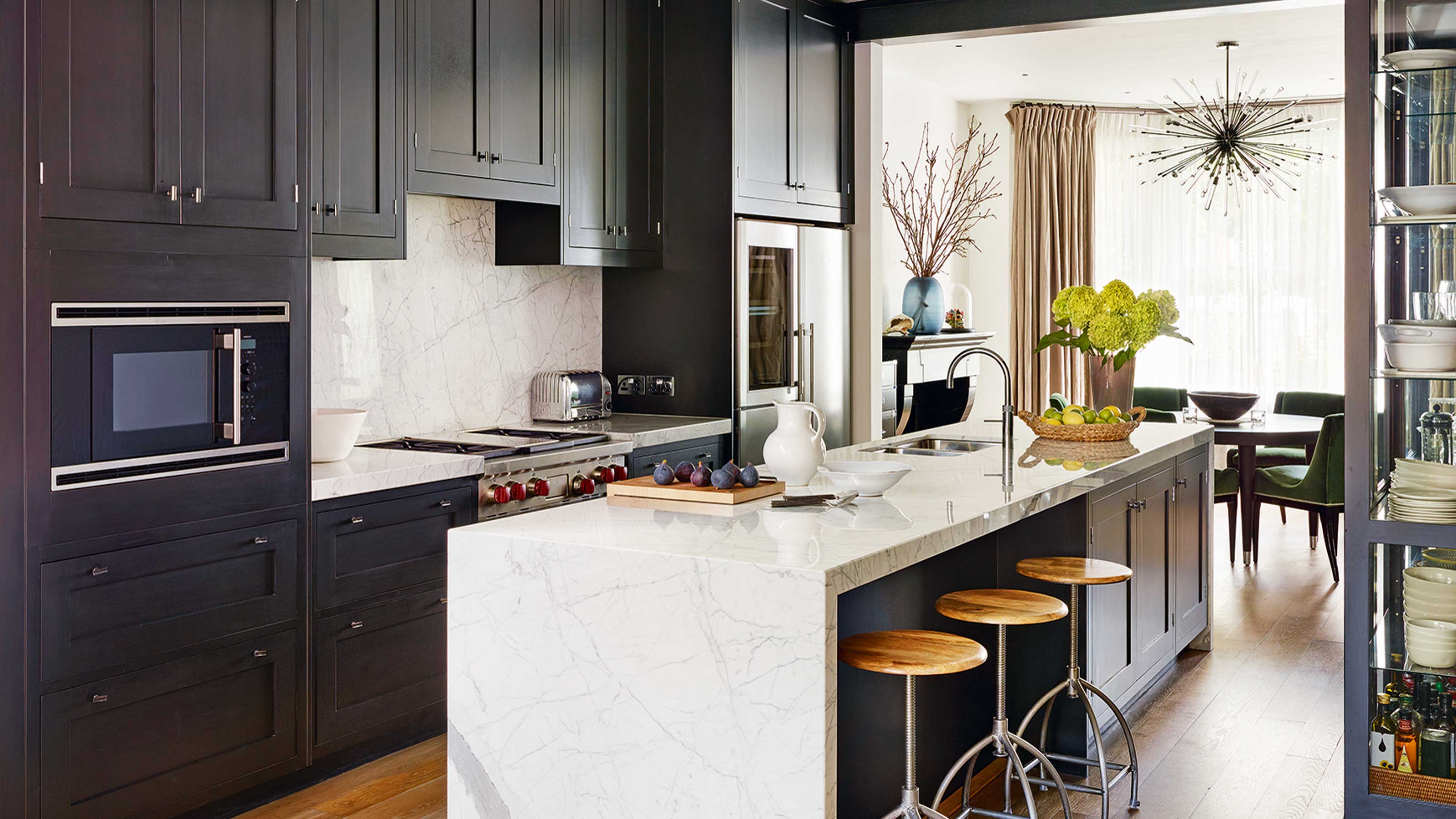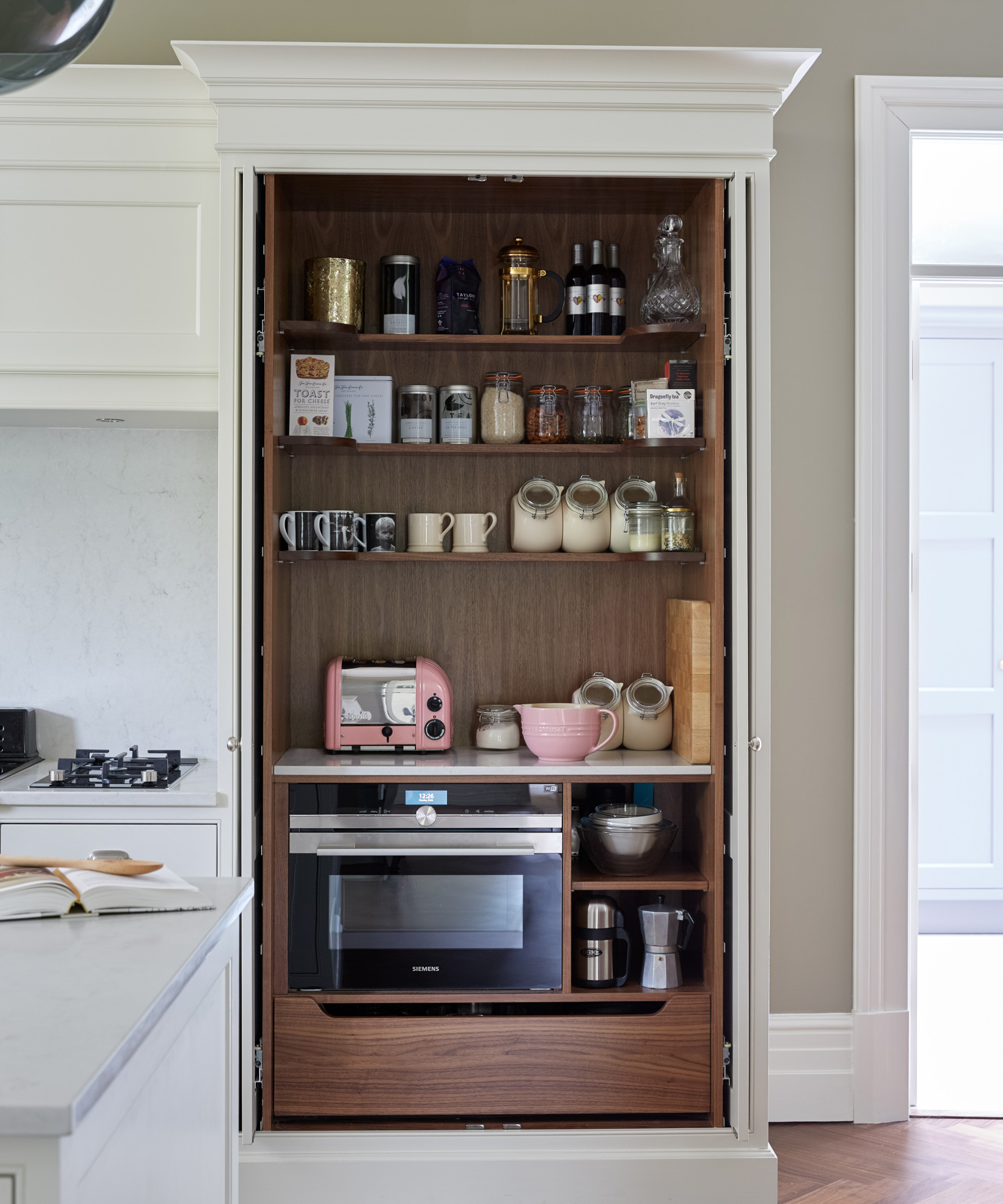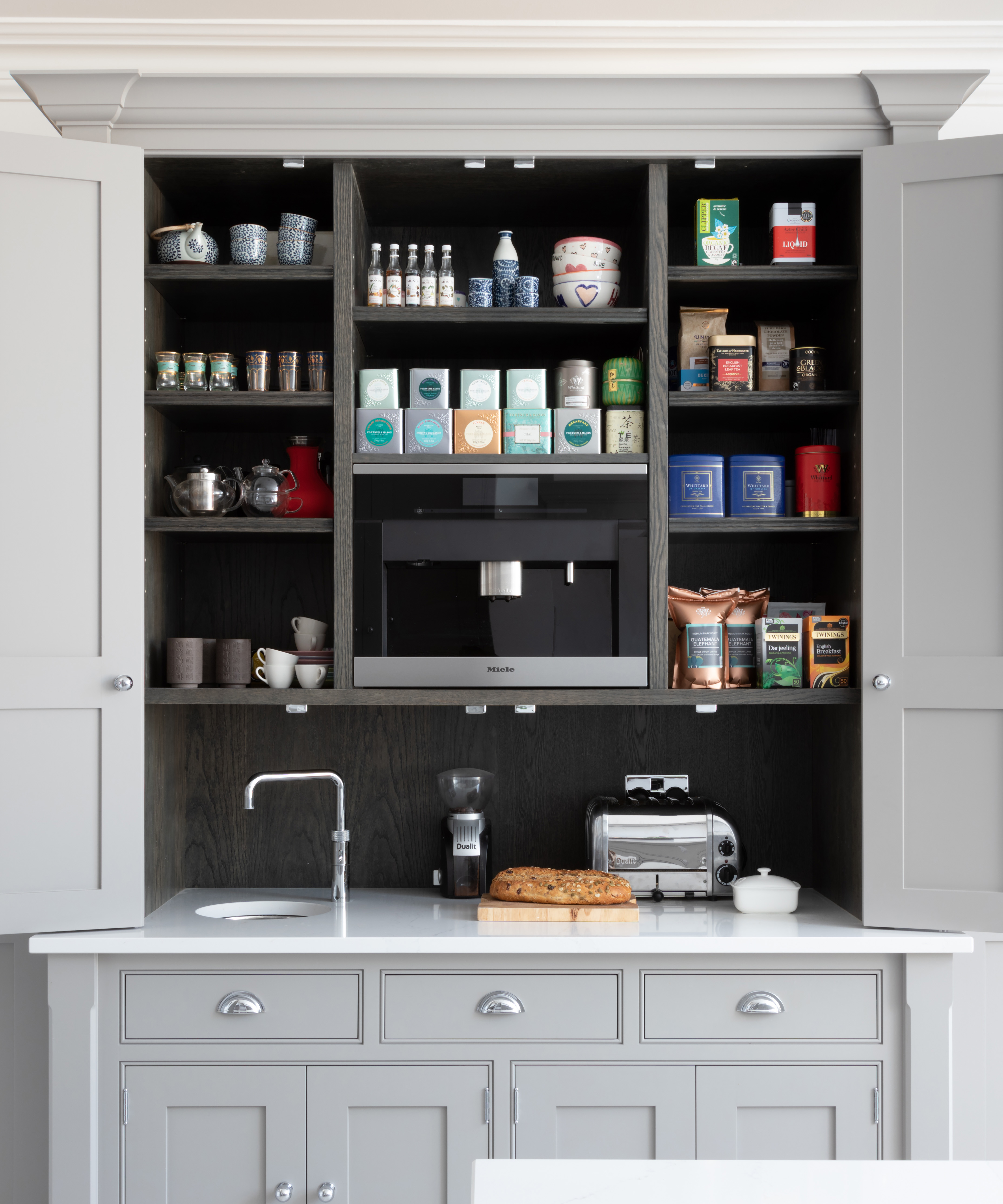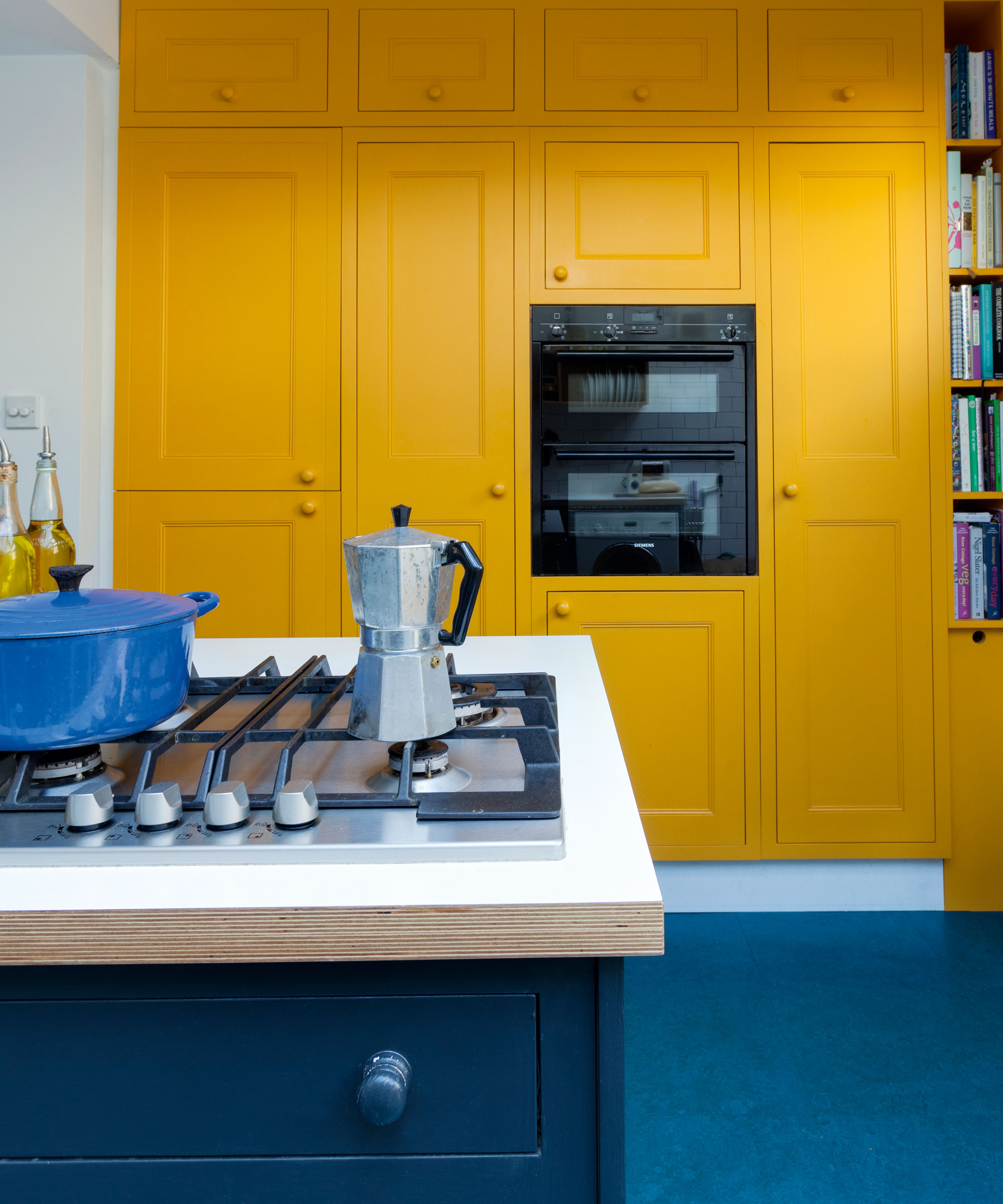
Microwaves are undoubtedly helpful fixtures in today's modern kitchens, offering convenience and speed like no other appliance. However, knowing which common kitchen items you can and can't microwave is crucial to avoid costly damage to your unit.
You only need to type 'can I microwave' into an internet search bar to be met with a myriad of common search terms, such as 'can I microwave Pyrex?' or 'What about my favorite ceramic mug?'. Knowing what does – and doesn't – belong in a microwave is a bit of a kitchen conundrum, but thankfully, these questions are easy to answer.
I researched the internet's most common microwave-related searches and consulted a kitchen expert. Below, we reveal which common items you can pop in the microwave and which items run the risk of lighting your kitchen up like the Fourth of July.
Kitchen items you can and can't microwave
Before you run the risk of breaking your appliance (or your favorite serving dish), it's worth researching which items are microwave-safe and which may lead to a kitchen nightmare.
Common Household Items You Can Microwave

Pyrex
Most Pyrex can go in the oven, so it stands to reason that these products are suitable for the microwave, right? Yes and no. Pyrex is designed to handle high heat, but you should make sure that the Pyrex items you choose have been specifically designed for use in the microwave (especially the lids). Thankfully, Pyrex has designed an entire range of microwavable containers, so it shouldn't be difficult to find a product that meets your needs.
It's important to remember that shifting from very cold to very hot environments can cause some glass containers to crack. So even if your Pyrex container is labeled as 'shock-resistant,' it's a good idea to let it come to room temperature before popping it in the microwave, especially if it has been stored in the freezer.
These Pyrex dishes (and lids) are oven, microwave, and dishwasher safe. When in doubt, always check for the microwave-safe symbol.
Parchment Paper
Uncoated parchment paper is a hassle-free option for wrapping food or covering dishes for microwave use. It can prevent messes without worrying about catching fire or releasing chemicals. Just be careful to avoid waxed paper varieties.
Coffee Mugs
Many coffee mugs, especially ceramic ones, are microwave-safe. Ceramics made for microwave use are designed to absorb the heat evenly, ensuring your drink warms up properly without damaging the mug or the microwave. However, steer clear of mugs with metallic accents – such as shiny foil patterns or handles – and always look for the microwave-safe label.
Items to microwave with caution

Paper Plates
'Regular paper plates are not microwave-safe, as they pose a fire hazard,' warns Lindsey Chastain, home cook and Founder of The Waddle and Cluck. 'Instead, opt for branded microwave-safe paper plates. Their micro-perforated surfaces are designed for heating foods safely.'
Mason Jars
Mason jars aren’t all created equal for microwave use, explains Lindsey Chastain: 'Many older varieties of Mason jar feature lids that contain metal and therefore should not be microwaved,' she cautions. 'However, newer Mason jars – with microwave-safe symbols – have been developed so they are suitable for popping in the microwave and heating up.
'It's worth noting that they will get quite hot in the microwave, so use a hot pad to remove them to avoid burning your fingers.'
Don't risk burning your hands when removing Mason jars from the microwave. This stylish Kate Spade New York striped potholder set is heat resistant, and features a convenient hang loop for easy storage.
Ziplock Bags
If you've ever needed to steam veggies in a microwave, then you've no doubt turned to trusty ziplock bags. But before you pop one of these into the microwave, make sure the seal is open to let steam escape and avoid any pressure build-up.
‘Ziplock bags are fine for steaming vegetables or gently warming foods,’ adds Lindsey. ‘But make sure you only microwave the bags on a low power setting to avoid them melting.’
Plastic Wrap
In a pinch, plastic wrap can be a helpful tool to cover your dishes and avoid messy splatters when heating food in your microwave. However, it's essential to double-check that your choice of wrap is labeled as microwave-safe. You should also keep it from directly touching your food to avoid it melting or potentially transfering chemicals onto your dish.
Investing in a purpose-made microwavable plate cover is a good alternative to plastic wrap, as you can reuse these items repeatedly without any risk of contaminating your food.
These handy microwave plate covers are an affordable and reusable alternative to plastic wrap.
Silicone Bakeware
Silicone bakeware adapts well to microwave use, resisting both high and low temperatures. Thanks to silicone's heat-resistant properties, these essential home cooking tools are ideal for everything from reheating food to baking. It's a versatile and durable option for the home cook who is looking to reduce waste and avoid using disposable microwave covers or wraps. Just ensure your silicone bakeware is pure silicone, without any metal parts, before placing it in your microwave.
Items to avoid microwaving

Crystal glassware
When enjoying a warming glass of mulled wine during the holiday season, don't be tempted to pop your best crystal tumbler in the microwave. Rapid temperature swings can cause cracks or breaks, and the same advice goes for dishes with crystalline glazes. The last thing you want to spend the holidays doing is picking shards of your heirloom glasses out of the microwave...
Melamine dishes
'Melamine dishes and serveware should not be microwaved,' explains Lindsey Chastain. 'The melamine material contains binders and fillers that can heavily leach or decompose when exposed to microwave radiation and heat. This releases toxic compounds that can potentially migrate into foods. Even if labeled microwave-safe, it is best to avoid reheating foods in melamine.
Single-use Plastics
Microwaving single-use plastics is a big no-no. These plastics can melt under the heat, potentially leaking nasty chemicals like BPA (Bisphenol A) into your food. Even if these items say ‘microwave-safe’ on the label, it's a bit of a gamble. So, why take the risk? Swap single-use plastic out for Pyrex or ceramic dishes before you hit 'start' on that microwave, as this will help keep your meals safe from unwanted chemicals.
Aluminum Foil
'Can you put aluminum foil in the microwave' is one of the most frequently asked microwave-related questions. The straightforward answer is no; using aluminum foil in a microwave oven is not recommended. Although you can put foil in an air fryer, it can cause sparks and even flames when microwaved. This is because microwaves bounce off metal, creating a potential fire hazard. It’s safer just to skip the foil altogether and opt for a microwave-safe cover to avoid any 'shocking' surprises.
Microwaves make our lives easier, but safety should always come first. If you have any doubts about whether or not an item is microwave-safe, it's best not to take the risk. It's also good practice to regularly clean a microwave to avoid contaminating your meals with built-up dirt or grime.







